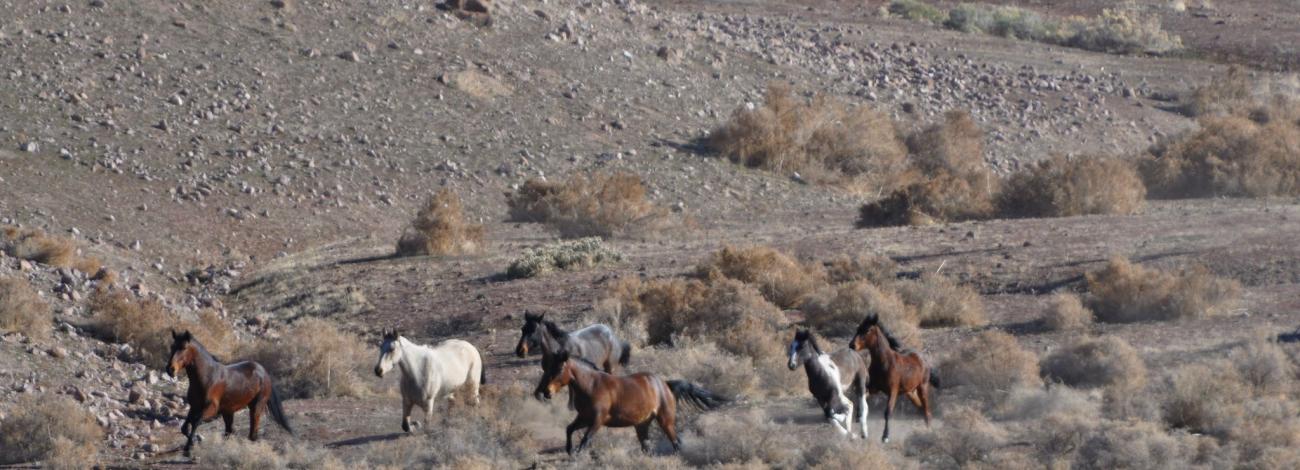
Frisco HMA
The herd’s lineage is based in ranching and mining stock and their size and colors vary. Most are bays, sorrels and brown, but you can also find pintos, palominos, buckskins, roans and grullas; which have been introduced to the area through BLM management from other Herd Management Areas across the western U.S.
Location
The Frisco Herd Management Area is located in Beaver County, about 15 miles northwest of Milford, Utah, covering approximately 95 square miles encompassing the San Francisco Mountains.
Size
The Herd Management Area contains 48,733 acres of BLM lands and 11,634 acres of Federal, State, and privately-owned land for a total of 60,367 acres.
Appropriate Management Level
The appropriate management level is 30 to 60 animals.
Topography/Vegetation
The Herd Management Area ranges from 5,600 in the valleys to 9,500 feet in elevation at the top of Frisco Peak. The Herd Management Area supports vegetation types of big sagebrush and pinyon/juniper. The pinyon/juniper vegetation type dominates the Herd Management Area and can be dense with minimal understory forage. Open areas outside of the pinion/juniper canopy are dominated by sagebrush/grasslands. Indian ricegrass, needle-and-thread grass, and small amounts of curlygrass are the primary forage species.
Temperatures range from 105 degrees Fahrenheit in the summer, to sub-zero in the winter. The wild horses primarily use the lower benches in the winter and the higher elevations in the summer. The Herd Management Area is heavily forested with pinyon/juniper trees. The soils within the area are primarily loams. There are considerable amounts of surface rock and scattered rocky outcrops within canyons resulting in wild horses having difficulty traveling long distances and having to take circuitous routes between forage and water.
The Herd Management Area has twelve springs. Five of the springs are developed with the rest undeveloped. Most of these water sources were dry in 2015. Only four springs (Coyote, Diaper, Moorehouse, and High Rock Springs) have sufficient water to sustain wild horses and wildlife through the summer. Coyote is in the Southeastern part of the Herd Management Area. Diaper and High Rock Springs are in the northeast portion of the Herd Management Area. Moorehouse spring is in the central eastside of the Herd Management Area. This limits the wild horse movement to the east side of the Herd Management Area in the hot summer months. These four springs also have pipelines and troughs that spread out the use of wild horses on the Herd Management Area.
Wildlife
Mule deer habitats in the Frisco Herd Management Area has been identified as crucial winter range. During spring, summer and early fall, deer fed primarily on a variety of forbs and grasses, with light use on big sagebrush, black sagebrush and antelope bitterbrush. In fall and winter, deer shift their diets to shrubs including big sagebrush, black sagebrush, antelope bitterbrush, Gambel oak and curlleaf mountain mahogany.
Pronghorn antelope occupy the area and typically utilize a variety of vegetation with shrubs being highest in composition followed by forbs and grasses and is used yearlong.
Elk are also found within the Herd Management Area and rely primarily on grasses year-long for forage, but will utilize forbs in spring and summer, and shrubs in winter.
